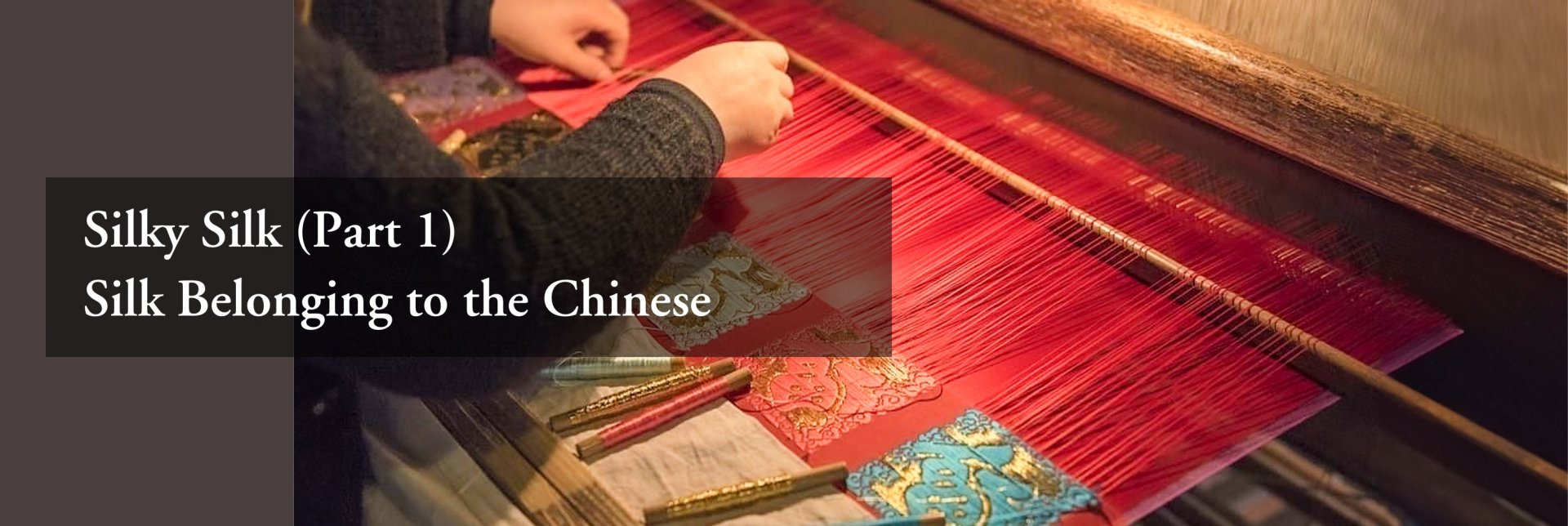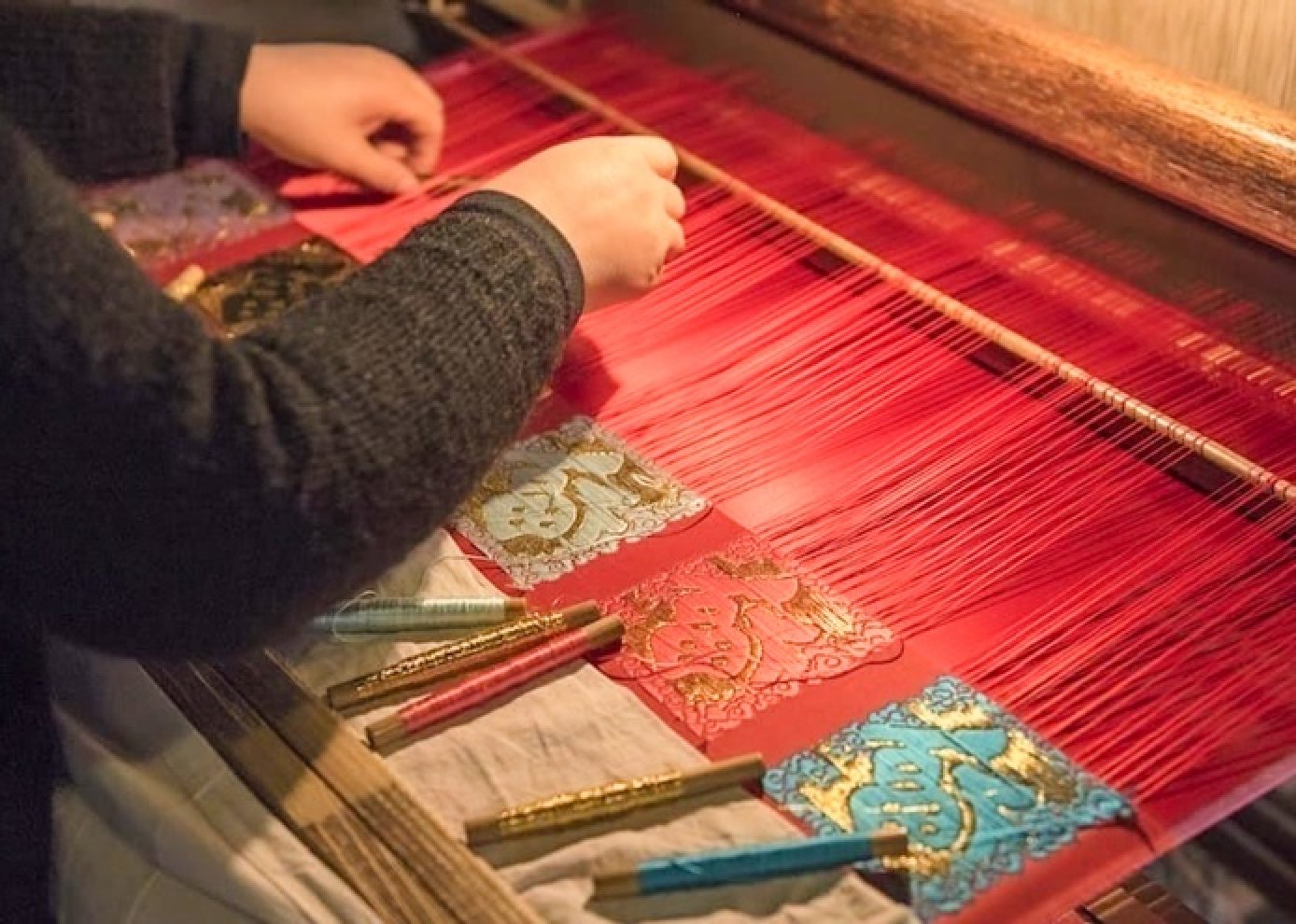Silky Silk (Part 1):
Silk Belonging to the Chinese
During my studies, I once learned in Chinese history class about the Chanyuan Treaty (澶淵之盟) which was signed during the reign of Emperor Zhenzong of Song Dynasty (宋真宗 趙恆, 968-1022). The Song Dynasty had to annually deliver 200,000 pieces of silk and over hundred thousand taels of silver to the Liao Dynasty. Similar clauses continued in the Song-Jin peace negotiations and even into the Qing Dynasty. However, I found solace in the idea that "turn hostility into friendship (化干戈為玉帛)” could be considered a good thing! The Song Dynasty would send substantial annual tribute, including silk satin, to the Liao Dynasty, and the two nations regarded each other as brothers. This exchange resulted in a peaceful border for over 120 years, allowing for continued trade and a geopolitical balance. The economy of the Song Dynasty was prosperous, the national treasury was sufficient, and the people's livelihood was rich, which was not without reason.
Since ancient times, silk has been a precious commodity. It served not only as a material but also had various uses, such as paying taxes and medium of rewards. During the Han Dynasty, silk was valued based on the weight of gold, and the length of silk was even used as one of the standards for currency. Silk brought immense wealth but also attracted the covetous eyes of neighboring countries, resulting in occasional invasions. To appease these tribal groups, emperors often used the gift of silk as a tool of pacification. Emperor Taizong of Tang Dynasty (唐太宗 李世民, 598-649) also frequently used silk to entice neighboring countries to pledge their loyalty. Sometimes, the status of silk even surpassed that of gold and silver. Emperors would select different grades of silk as gifts, leading to suspicion and division among Khans.
The development history of silk production, from silkworms to silk, spans over five thousand years. The origin of silk is surrounded by legends, such as the story of Emperor Huangdi (黃帝, 2717-2600 BC.)'s consort, Leizu (嫘祖, ?-?), teaching the people how to raise silkworms and extract silk, or the mythical tale of the Silk Princess from Horsehide Silkworms(馬皮蠶女). However, these are mere legends. As early as the Neolithic period, sericulture and silk production were already present, as evidenced by the discovery of prehistoric silk textiles in Henan and Zhejiang. Subsequently, sericulturists cultivated mulberry trees, raised silkworms, extracted silk, and manually wove beautiful silk fabrics. Initially, handlooms or foot-treadle looms were used, leading to the development of various types of weaving machines, ultimately producing high-quality silk fabrics such as damask, brocade, satin, and patterned silk. The silk industry reached its peak during the Tang Dynasty, and traditional silk techniques became even more refined after the Ming Dynasty. In the 19th century, China began to adopt Western industrialization achievements and introduced machine production for silk. The popular varieties of silk worldwide today, such as mulberry silk and Tussah silk, all originated in China.


In Book of Poetry (《詩經》), the poem Odes of Bin: July (《幽風·七月》) describes the sinking west of Mars in July and the distribution of warm clothing in September. It portrays the spring season with a bright sun and busy yellow orioles. Village girls backpack tall baskets to harvest mulberry leaves and raise silkworms. Book of Rites: Yue Ling (《禮記·月令》) reflects the social education related to agricultural sericulture and silk weaving from the Xia Dynasty to the Western Zhou Dynasty. The official position of "The Secretary of Silk (典絲)" was established during the Western Zhou Dynasty, responsible for overseeing silk tribute, assessing the quality, and grading of silk, and distributing it to artisans for further processing. Silkworm Fu (《蠶賦》) Xunzi (荀子, 316-235 BC.) used to be the magistrate of Lanling County (蘭陵縣)in the Chu State(楚國). This place originally belonged to the Zeng Kingdom (繒國) in the Xia Dynasty, and the silk weaving technology was mastered there very early. Mozi (墨子, 468-376 BC.) said that the silk industry was booming, stimulated rapid advancements in dyeing techniques. At that time, the extremely difficult counterstaining technology was found.

Photo source: Academy of Chinese Studies
In Bai Juyi (白居易, 772-846)'s poem The Red Yarn Carpet (《紅線氈》), he vividly describes the process of selecting cocoons, boiling, unraveling, reeling, dyeing, and weaving the carpet. "Weaving a fragrant palace carpet … Beautiful ladies dance upon it, with their fine stockings and exquisite shoes embedded in the soft carpet (「織作披香殿上氈……美人蹋上歌舞來,羅襪秀鞋隨步沒。」)" He portrays the red carpet as a plush, delicate fabric that cannot withstand the weight of dancers' feet, and even their stockings and shoes get embedded in the fluff of carpet, illustrating a lively scene. In another poem Silk Twill (繚綾), he also vividly describes the process of weaving, dyeing, cutting, and pressing in the production of silk clothing. The production of brocade requires meticulous work, with a thousand turns of the shuttle causing pain in the hands of female workers, yet only yielding less than a foot of fabric (「絲細繅多女手疼,紮紮千聲不盈尺。」), indicating its high level of difficulty. The poem mentions various silk fabrics such as damask, satin, brocade, and silk, reflecting the wide variety of silk weaving during the prosperous Tang Dynasty. Zhang Xiaobiao (章孝標, 791-873)'s Weaving Silk (《織綾詞》) expressed the soaring price of silk due to supply and demand factors, resulting in a production standstill due to the shortage of yarn.
Go through Ban Xian Pavilion by sedan in snowy day (《八聲甘州·半仙亭籃輿雪中回》by Yuan Haowen (元好問, 1190-1257) writes, “Sleeping high on yellow silk quilted blanket (「黃綢日高眠」).” Since they could sleep on silk blanket, it indicates that they lived quite comfortably in the mountains. During that time, only high-ranking officials and nobles could afford luxurious fabrics like silk satin and brocade. Liu Song (劉崧, 1321-1381) writes, “Laboriously sending me a green silk blanket, I am ashamed to still cook purple ginseng herbal medicine. (「勞君遠寄青綾被,愧我仍烹紫朮湯。」)” It is a gratitude towards a friend’s care. Sending a letter alone took a considerable amount of time back then, not to mention sending a genuine silk blanket from a distant place! Just imagine, receiving a precious green silk blanket from afar while the poet lay on a sickbed. It truly moved her!

In Dream of the Red Chamber, Cao Xueqin (曹雪芹, c.1715-1763) meticulously depicts silk clothing, accessories, fabrics, and furnishings. These descriptions are precise and diverse, truly astonishing! Being born into a family involved in silk production in Jiangning, he was deeply influenced by silk culture from a young age. Through the portrayal of different plots and scenes, he vividly showcases the development of the silk industry in the mid-to-late Qing Dynasty, as well as the functions and uses of various silk products. In Dream of the Red Chamber, there are descriptions of more than ten types of silk fabrics alone. Among them, Palace Silk is an exquisite silk fabric that takes twelve days to complete a single piece. On the other hand, Cocoon Silk has a coarser texture and is suitable for "commoners" like Grannie Liu (劉姥姥) to wear, who is a declining noble. The book provides detailed descriptions of the silk clothing worn by the characters, highlighting their personalities and social statuses.
The eighty chapters of the book cover a wide variety of satin and brocade fabrics, including Cloud Satin, Japanese Satin, Python Brocade, Makeup Satin, Feather satin, and Regular Satin. Makeup satin, Python Brocade, and Cloud Satin (also known as Cloud Brocade) are mainly woven with a large amount of gold and silver threads to create intricate patterns, presenting a luxurious and magnificent visual effect. These fabrics were primarily enjoyed by high-ranking officials and the wealthy. Python brocade and Makeup Satin have strict requirements for their pattern designs and should not be exceeded. Dream of the Red Chamber provides a rich description of silk colors, including various shades of red such as bright red, water red, apricot red, pomegranate red, and silver red. Lighter colors include onion yellow, white silk, moon white, while other colors mentioned are lotus root color, sky blue, autumn fragrance color, green silk, pine green, and more. Silk can be used to make jackets, skirts, quilts, curtains, trousers, bellybands, camisoles, bundles, and can even be used for lantern decorations.


Silk, after being introduced to the West through the Silk Road, captivated and amazed the Romans. During the early Roman Empire, Chinese silk arriving in Europe held a value equivalent to gold, making it extremely expensive. However, it was still highly favored by the local nobility. By the fourth century, due to the massive importation of silk, the wealth of the Roman treasury was depleted. Consequently, the Roman government issued several decrees prohibiting the wearing of silk, but these laws were unable to curb the love for silk. During that time, the Western people referred to China as the “Land of Silk” (Serica or Seres), and their romanticized notions of ancient East Asia were embodied in silk, considering it a magnificent, prosperous, and peaceful realm.
Silk was luxurious and visually pleasing, becoming a symbol of social status. Persian and Roman emperors greatly admired robes made of silk. In India, silk was used to adorn religious artifacts, initially in Buddhism, decorating pagodas and Buddha statues.
In Christianity, clergy members wore silk vestments richly decorated with intricate patterns, exhibiting unparalleled grandeur. The opulent decoration of woven silk or tapestries in churches was truly impressive. In terms of military usage, knights purchased silk to wear under their armor, increasing comfort and reducing the discomfort caused by armor rubbing against the skin.
However, silk was not exclusive to China alone. India, Italy, Byzantium, and other regions also produced silk. However, due to climate limitations, the quality of the silkworm cocoons produced was not on par with China’s, and even if silk fabrics were produced, they were not as exquisite as those from China. Therefore, these regions would import raw silk from China and then manufacture silk textiles. However, human resources, production techniques, management systems, and political stability in these regions were consistently inferior to China’s, resulting in the gradual decline of their silk Industries. However, the demand for silk fabrics has not abated yet!
Why has silk been cherished by people from China and abroad for thousands of years, despite its high price? Silk indeed possesses unique characteristics and charms that make it difficult to find substitutes!
Major Reference
1、朱新予:《中國絲綢史》,北京:紡織工業出版社,1997年。
2、黃能馥,陳娟娟:《中國絲綢科技藝術七千年》 ,北京:中國紡織出版社,2002年。
3、國家圖書館:《絲綢中的記憶》,北京:國家圖書館出版社,2013年。
All articles/videos are prohibited from reproducing without the permission of the copyright holder.




Welcome to leave a message:
Please Sign In/Sign Up as a member and leave a message